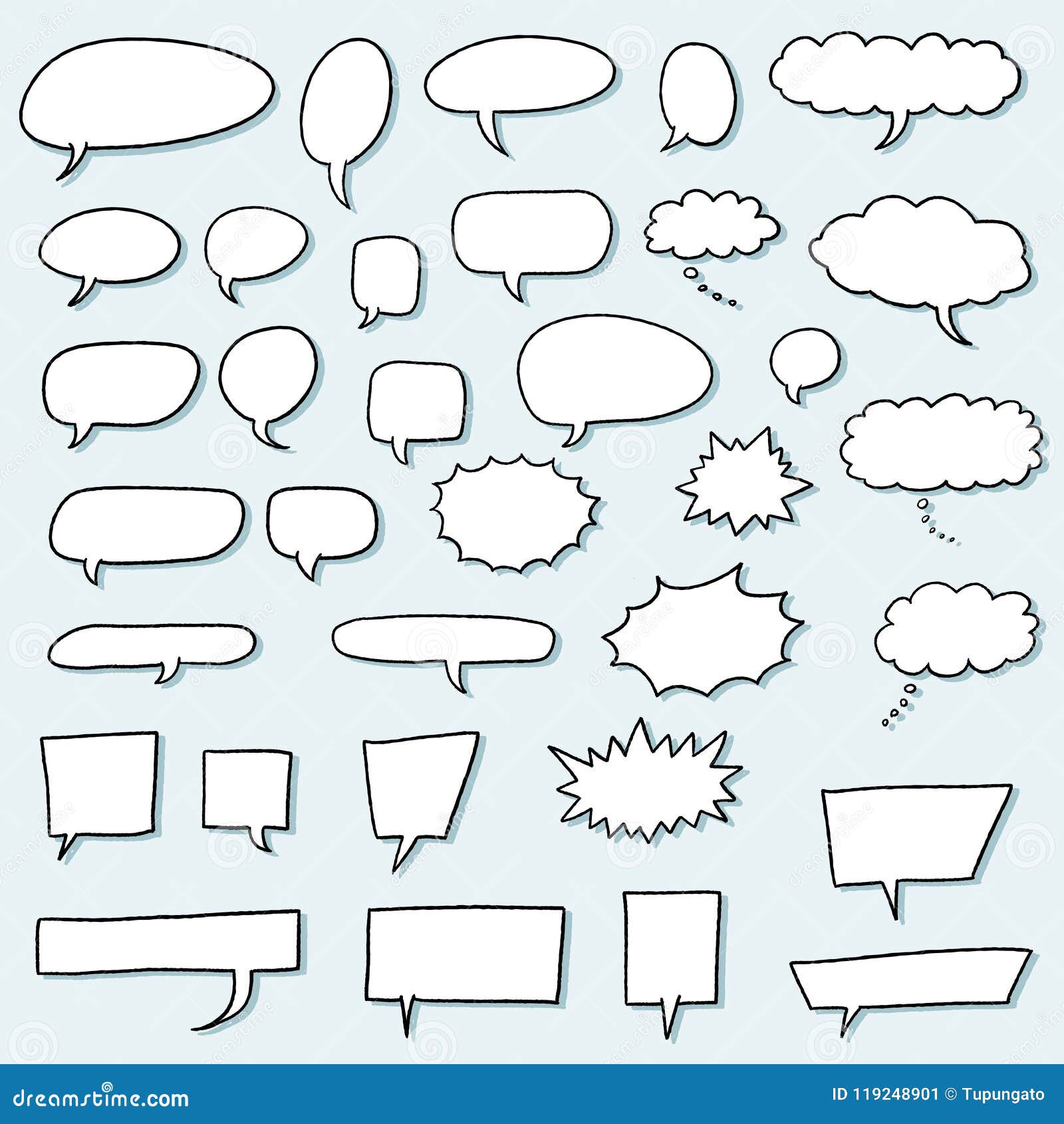
Maybe this just means that Martha Speaks is illustrated more complexly than Franklin. Even though there are speech bubbles they’re still serving to illustrate what the narrative is saying, but here they are adding to its meaning rather than simply showing it. But wait, there’s more! Here’s another earlier page She had a lot to tell them! It tells children “Martha was crushed” and shows her looking dejected. Here’s a page that exemplifies what I’ve been saying: Martha was crushed.
#Comic book speech bubble series#
Martha Speaks was one of my favorite series as a kid-I had a lot of favorite series’ apparently-but I did not recall until I looked it up again for this blog that it was actually a combination of narrative and speech bubbles. An exception to this, apparently, is Martha Speaks. Comic books and graphic novels are no less potentially biased, but they tend to play out more as if the reader is witnessing an event rather than being told about it later by a witness.

This points to a big difference between the two (or three) genres: children’s books are like being told a story by someone with a potentially biased point of view.
#Comic book speech bubble free#
We’re not told exactly how the character is saying it so we are free to interpret it as we would any other speech by someone in real life: as we wish to. Or maybe it only seems to some that the tone is angry, maybe some interpret that same emission as being shocked or surprised or frustrated. It is typically indicated by bolder, maybe larger, possibly jagged letters, an angry facial expression, body language, and maybe a differently shaped bubble. Click on the image twice to see it larger.) When a character says something angrily in a comic book or graphic novel, like in this page from Watchmen (Sorry for the crappy quality, apparently my scanner isn’t as great as I thought. Correspondingly, a children’s story is typically written and then illustrated whereas comic books and graphic novels are largely a collaborative effort (of varying degrees, true) between the author of the story, the artist(s) and letterers. It is interesting that children are told the tone and emotion with which things are said in traditional narrative, with an illustration that further demonstrates that. Children’s books illustrations tend to look more like snapshots from a narrated pantomime rather than characters actually living out the story with us peering into their lives. “’Yes,’ she answered proudly” coupled with a haughty look on her face. Yet in children’s books, kids get the double whammy of the description and a picture of what is going on to influence how they interpret a work. Description of speech is missing in comic books and graphic novels they for the most part let the reader determine for themselves the feelings with which the words were said. The narrative tells us Beaver’s tone of voice and the image shows us her facial expression. There is absolutely no difference here between what the story tells us and what the image demonstrates.

For example, consider this page from Franklin: “Yes,” she answered proudly. Dialogue within a narrative follows this pattern conversations are described within the story and images happen to accompany them. Narrative has a clear and orderly fashion: left to right, down a line, left to right, down a line, repeat. Next I will define dialogue in this context as being within the narrative. Speech bubbles are also generally unique in that they contain only what the character is saying the rest is left to the narration box or the panel they are enclosed in. Often the shape of the speech bubbles is unique to a character, so that one can recognize who is speaking without actually seeing the speech bubble “coming from” a character. More than that, the speech bubbles usually connect to the person speaking the words. First off, with text boxes there’s the narration and then there’s speech and they are in completely separate bubbles.

What’s the difference really? To start, let’s make an important distinction here: that for my purposes narrative will be a story as a whole whereas narration will refer solely to what a narrator, omniscient or otherwise, is telling the reader. I may or may not revisit this in my next blog, but it is more likely that I will since Desireesw already took my idea about Truth(s)/relativity in Dream Country.Īnyways, dialogue vs. But I have started down this path already in an earlier post and I promised more to come, so I am going to attempt to blunder on and hopefully hit something at least a little interesting. Let me just restate my disclaimer: I have virtually no foreknowledge whatsoever of more than a few graphic novels or comic books, so I admit that it’s a little presumptuous of me to undertake the task of comparing the genres to another.


 0 kommentar(er)
0 kommentar(er)
